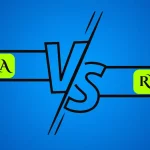Every day, we come across hundreds of statements – in books, on television, from our friends, family, and teachers. But how do we know which ones are facts and opinions? This guide will help you understand the difference and make you a smarter reader and thinker!
What is a Fact?
A fact is like a solid rock that doesn’t change. It’s a statement that can be proven true using evidence, measurements, or observations. Facts are the building blocks of knowledge that scientists, historians, and researchers use to understand our world.
Characteristics of Facts:
- They remain true regardless of who states them
- Can be proven through research or evidence
- Don’t change based on someone’s feelings
- Are supported by reliable sources
- Can be checked and verified
- Often include specific numbers, dates, or measurements
Read More: Understanding the Difference: Tradition vs Culture
Examples of Facts:
- The human body has 206 bones
- Water boils at 100 degrees Celsius at sea level
- Mount Everest is the highest mountain on Earth
- A square has four equal sides
- The Earth takes 24 hours to rotate on its axis
What is an Opinion?
An opinion is like a rainbow – everyone might see it differently! It’s a personal belief, feeling, or judgment about something. Opinions can change over time and vary from person to person.
Characteristics of Opinions:
- Based on personal preferences or beliefs
- Can change over time
- Different people can have different valid opinions
- Cannot be proven right or wrong
- Often include emotional language
- Usually express feelings or judgments
Examples of Opinions:
- Blue is the most relaxing color
- Basketball is more exciting than soccer
- Winter is the best season
- Chapter books are more interesting than picture books
- Chocolate ice cream tastes better than vanilla
Learn More: The Key Differences Between Fiction and Non-Fiction
Detailed Comparison Table
| Aspect | Facts | Opinions |
|---|
| Definition | Statements that can be proven true | Personal beliefs or judgments |
| Proof | Verifiable with evidence | Cannot be proven right or wrong |
| Nature | Objective | Subjective |
| Change | Remains constant | May change over time |
| Language Used | Specific, measurable terms | Emotional or preference-based words |
| Source | Research, documentation, evidence | Personal experience, feelings |
| Universal Agreement | Generally accepted by everyone | Varies from person to person |
| Examples of Key Words | “Is,” “was,” “measures,” “contains” | “Best,” “worst,” “should,” “better,” “most” |
| Testing Method | Can be tested or observed | Cannot be tested |
| Time Relevance | Usually remains true over time | May change with experience |
How to Identify Facts and Opinions in Real Life
In News Articles:
- Facts: “The concert started at 7:00 PM”
- Opinion: “The concert was amazing”
In Advertisements:
- Fact: “This phone has a 6-inch screen”
- Opinion: “This is the best phone ever made”
In School:
- Fact: “The book has 200 pages”
- Opinion: “The story was very interesting”
Common Confusion Areas
Sometimes, statements can be tricky to classify. Here are some challenging examples:
- “The painting is beautiful” – Opinion (even if many people agree)
- “Many people think the painting is beautiful” – Fact (if it can be proven through surveys)
- “The movie was released in 2023” – Fact
- “The movie was the greatest of 2023” – Opinion
Also Learn: Belief vs Faith: Understanding the Key Differences
Why Understanding the Difference Matters
Knowing the difference between facts and opinions is important because it helps us:
- Make Better Decisions
- We can focus on proven facts when making important choices
- We can recognize when someone is sharing their opinion rather than fact
- Become Better Learners
- We can identify reliable information for school projects
- We can understand which sources to trust for research
- Communicate More Effectively
- We can express our opinions while respecting others’
- We can support our arguments with facts
- Be Smart Digital Citizens
- We can spot fake news more easily
- We can identify reliable information online
Practice Activities
Activity 1: Fact or Opinion Sorting
Label these statements as fact or opinion:
- “The Earth is round” (Fact)
- “Dolphins are the smartest sea animals” (Opinion)
- “Water is essential for life” (Fact)
- “Monday is the worst day of the week” (Opinion)
Activity 2: Statement Transformation
Turn these opinions into facts:
- Opinion: “Dogs are the best pets”
- Fact: “Dogs are the most popular pets in America, according to the American Veterinary Association”
Tips for Remembering the Difference
- The Proof Test
- Can you prove it? It’s probably a fact
- Can’t prove it? It’s likely an opinion
- The Everyone Test
- Would everyone agree? Might be a fact
- Would some people disagree? Probably an opinion
- The Time Test
- Stays the same over time? Likely a fact
- Changes over time or with different people? Probably an opinion
Conclusion
Understanding facts and opinions helps us become better thinkers and learners. Remember:
- Facts are proven truths that stay the same for everyone
- Opinions are personal beliefs that can be different for each person
- Both facts and opinions are important, but they serve different purposes
- Being able to tell them apart helps us make better decisions and understand the world around us
Keep practicing identifying facts and opinions in your daily life – in books, conversations, news, and even advertisements. The more you practice, the better you’ll become at telling them apart!



